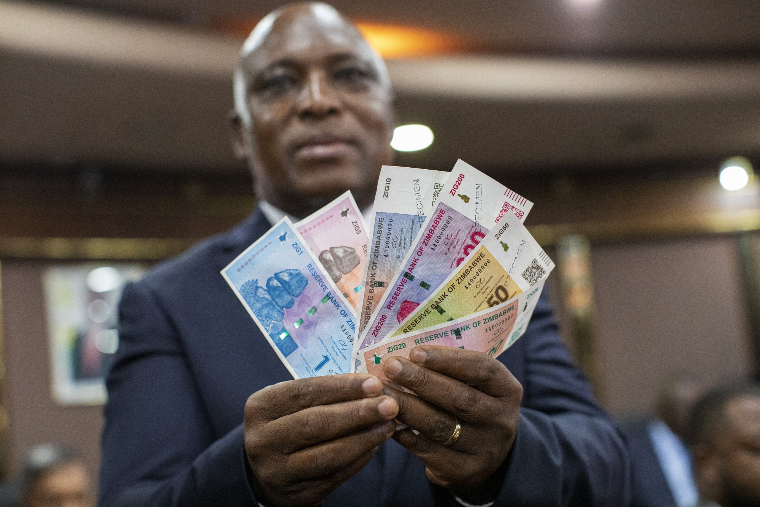 Zimbabwe’s battered currency, the Zimbabwe Gold, which was under attack until the central bank devalued it from ZiG14 to ZiG25 to the United States dollar on 27 September, last week rallied against the United States dollar strengthening from 28.6829 to the greenback on 1 November to 25.5893 on Friday, 8 November.
Zimbabwe’s battered currency, the Zimbabwe Gold, which was under attack until the central bank devalued it from ZiG14 to ZiG25 to the United States dollar on 27 September, last week rallied against the United States dollar strengthening from 28.6829 to the greenback on 1 November to 25.5893 on Friday, 8 November.
This was the most sustained rally since the currency was introduced in April though some are questioning whether the currency will continue to strengthen against the US dollar during the coming festive season.
Reports say the market had already written off the local currency but Finance Minister Mthuli Ncube insists that the ZiG is going nowhere.
The ruling Zimbabwe African National Union- Patriotic Front at its annual conference last month urged the government to take robust measures to strengthen the purchasing power of the ZiG and entrench its usage.
It said the government should expedite efforts to de-dollarise the economy and promote the use of the ZiG as the country’s sole currency, and promote its wider circulation and availability in all denominations.
The party also urged the government to curb money laundering, speculation and arbitrage on the parallel market, including the criminalisation of the activities of economic saboteurs, errant manufacturers, retailers and other service providers as well as prescribing deterrent penalties.
Sources say Mthuli Ncube was taken to task by the party’s central committee for devaluing the ZiG as this was a clear admission that the ZiG was not backed by gold because the price of gold was going up.
They said that Ncube was accused of lining up the pockets of the party “chefs” as they were the only ones that benefitted from devaluation.
The devaluation was a disaster for business, pensioners and even students.
One businessman said that he had intended to clear his debts after being paid by the government for his services but the central bank devalued the currency before he had finished compiling his payment list. In the end, all the money from the government was only enough for staff salaries as these had also gone up following the devaluation.
The same applied to some pensioners who had just been paid out by the National Social Security Authority.
A university student who had loaded his money on Esadza found himself a month short after the devaluation.
According to the central bank the strengthening of the ZIG is due to the monetary measures adopted by the bank in September.
RBZ governor John Mushayavanhu told The Sunday Mail that the strengthening of ZiG was partly due to recent policy initiatives, including increasing the bank policy rate from 20% to 35% as well as increased foreign currency receipts.
“The tight ZiG liquidity conditions amid a tight monetary policy stance in the market have seen increased willingness by economic agents to liquidate their foreign currency positions, thereby creating demand for ZiG,” Mushayavanhu said. “These conditions have largely contributed to the appreciation of the currency.
“Currently, the total reserve money in local currency as of November 6, 2024 is about ZiG3.4 billion, which is about US$129 million, against foreign currency reserves of US$509 million…..
“The Reserve Bank’s total foreign currency reserve holdings of more than US$500 million as at November 1, 2024 are also more than the total bank deposits in the domestic currency of about ZiG12 billion — giving an implied exchange rate of around US$1:ZiG24.”
The market, however, still tells another story. According to Zimpricecheck, the gap between the official and black market rate is still too wide. The lowest blackmarket rate on Friday was ZiG35 to the US dollar while the highest was ZiG40:1.
(128 VIEWS)

